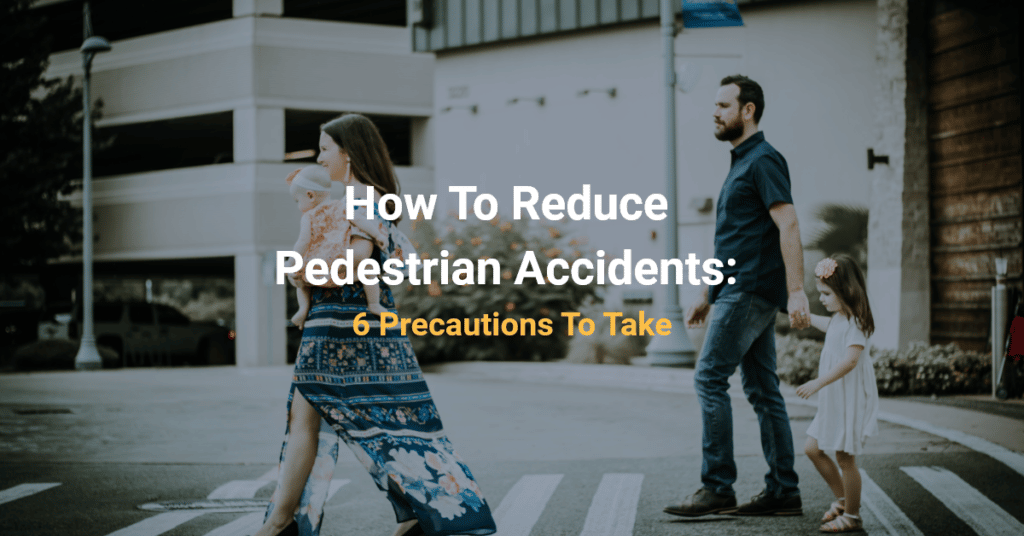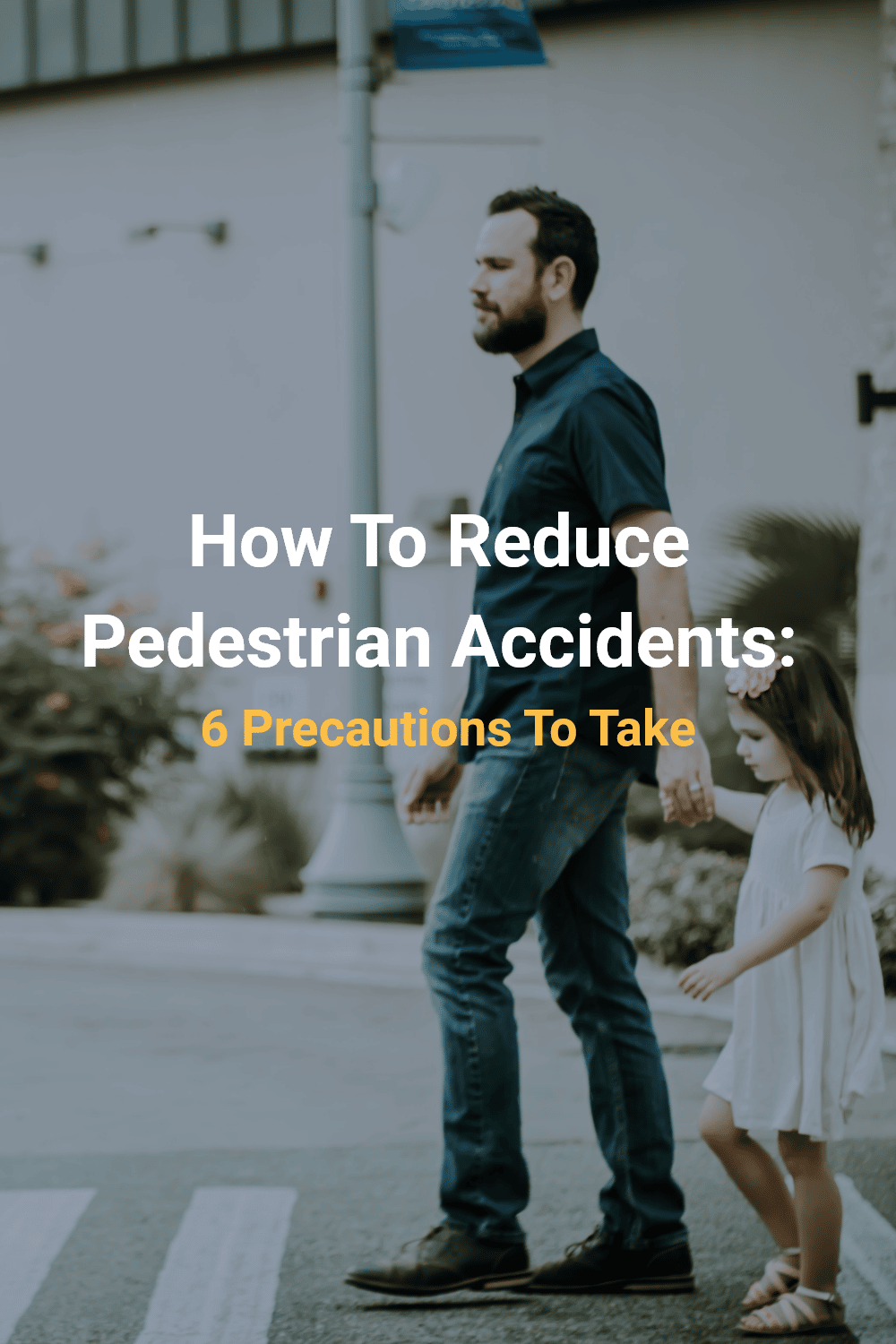How To Reduce Pedestrian Accidents: 6 Precautions To Take

In Michigan, there are precautions that drivers and pedestrians can take to reduce pedestrian accidents. Most importantly, drivers can be vigilant and watch for pedestrians. Drivers can refrain from speeding, driving too fast for conditions, texting while driving and drunk or drugged driving.
For people who have been injured in pedestrian automobile crashes, an experienced lawyer can help them to sue the at-fault driver to recover the pain and suffering compensation, excess medical expenses and lost wages and other economic damages they are legally entitled to.
A lawyer will also be able to help injured pedestrians to recover No-Fault benefits to pay for medical bills and lost income if their injuries have disabled them from working.
Drivers can take the following precautions to reduce pedestrian accidents in Michigan
If Michigan drivers take the following precautions to help reduce pedestrian accidents, there will be fewer pedestrian fatalities and injuries: (1) no speeding; (2) drive at a speed that is appropriate for the conditions and allow the driver to stop safely when necessary; (3) no texting while driving; (4) no distracted driving; (5) no driving while intoxicated; and (6) obey all traffic signs/signals.
Other precautions that drivers should take to help reduce pedestrian accidents in Michigan include:
- Be extra careful at crosswalks
- Slow down in areas where pedestrian traffic is high
- Try to make eye contact with pedestrians
- Remember that if the car in front of you stops, it could be stopping for a pedestrian – so do not try to pass unless you have first determined that you can do safely
Pedestrians can take the following precautions to help reduce pedestrian accidents
In Michigan, to help reduce pedestrian accidents, pedestrians can walk in designated areas such as crosswalks and sidewalks where they are available. Obey “walk” and “don’t walk” signals. Walk on the left side of the road facing the traffic if there are no sidewalks and you must walk in the street. Never walk on limited access highways.
Here is more detail on how to reduce pedestrian accidents in Michigan:
- Cross at crosswalks – In Michigan in 2019, “crossing not at an intersection” was the most deadly thing pedestrians could do, accounting 34.2% of all pedestrian fatalities caused by motor vehicle crashes.
- Walk on the sidewalk where one is available because it is against the law for a pedestrian to walk “upon the main traveled portion of the highway” where “sidewalks are provided.” (MCL 257.655(1))
- Walk against the traffic – not with it – if there are no sidewalks and you must walk in the street. (MCL 257.655(1))
- Never walk on a limited access highway because pedestrians are not “permitted on a limited access highway in this state.” (MCL 257.679a(1))
- Be careful between 6pm and 7pm – In Michigan in 2019, the hour between 6:00pm and 6:59pm had the most pedestrian-involved automobile crashes.
- Be careful on Fridays – Friday was the deadliest for pedestrians in Michigan in 2019.
- Between 2015 and 2019, the month of October (tied with August) had the highest total number of fatal pedestrian-involved automobile crashes in Michigan.
Compensation for pain and suffering damages
Injured pedestrians may be able to sue the at-fault, negligent drivers who caused their automobile crash for compensation for their pain and suffering damages, excess medical bills, excess lost wages and other economic damages.
To successfully recover pain and suffering compensation from the at-fault drivers who caused crash, injured pedestrians must be able to show that they have suffered a “serious impairment of body function,” which is the legal threshold under Michigan’s No-Fault law for car accident victims seeking to recover “noneconomic loss” damages.
Excess medical bills and excess lost wages are some of the economic damages you can recover from the at-fault driver. These damages will help to pay for your medical bills and to reimburse you for lost income that is not covered by the limits of the auto insurance policy through which you are claiming benefits and/or that exceed the benefits that are guaranteed to injured pedestrians under the No-Fault law.
Recovering No-Fault benefits
Injured pedestrians may be able to recover No-Fault PIP benefits which will help pay for medical bills, lost wages (if their injuries disable them from working), transportation and mileage costs for traveling to and from doctor appointments, household replacement services and attendant care services.
Unlike compensation for pain and suffering and excess medical bills and lost wages, No-Fault benefits are available “without regard to fault” so injured pedestrians are entitled to receive No-Fault benefits even before they have shown that the negligent drivers who caused the the crash were at-fault. (MCL 500.3105)
To start a claim, an injured pedestrian must file a “written notice of injury” which is also called an application for No-Fault benefits with the responsible auto insurance company within one (1) year after the accident. (MCL 500.3145(1) and (4))
Failure to file a timely application for No-Fault benefits will forever disqualify an injured pedestrian from claiming and recovering No-Fault benefits from the insurance company.
Injured and need a lawyer? Call Michigan Auto Law today
Though there are many precautions we can all take to reduce pedestrian accidents, crashes still happen. If you are a pedestrian and you have been injured in a car or truck crash, you can call toll free anytime 24/7 at (800) 968-1001 for a free consultation with one of our experienced automobile crash attorneys to discuss your claims. You can also get help from an experienced accident attorney by visiting our contact page or you can use the chat feature on our website.
(Sources: Michigan Traffic Crash Facts, Fact Sheets, Pedestrians, 2019)






